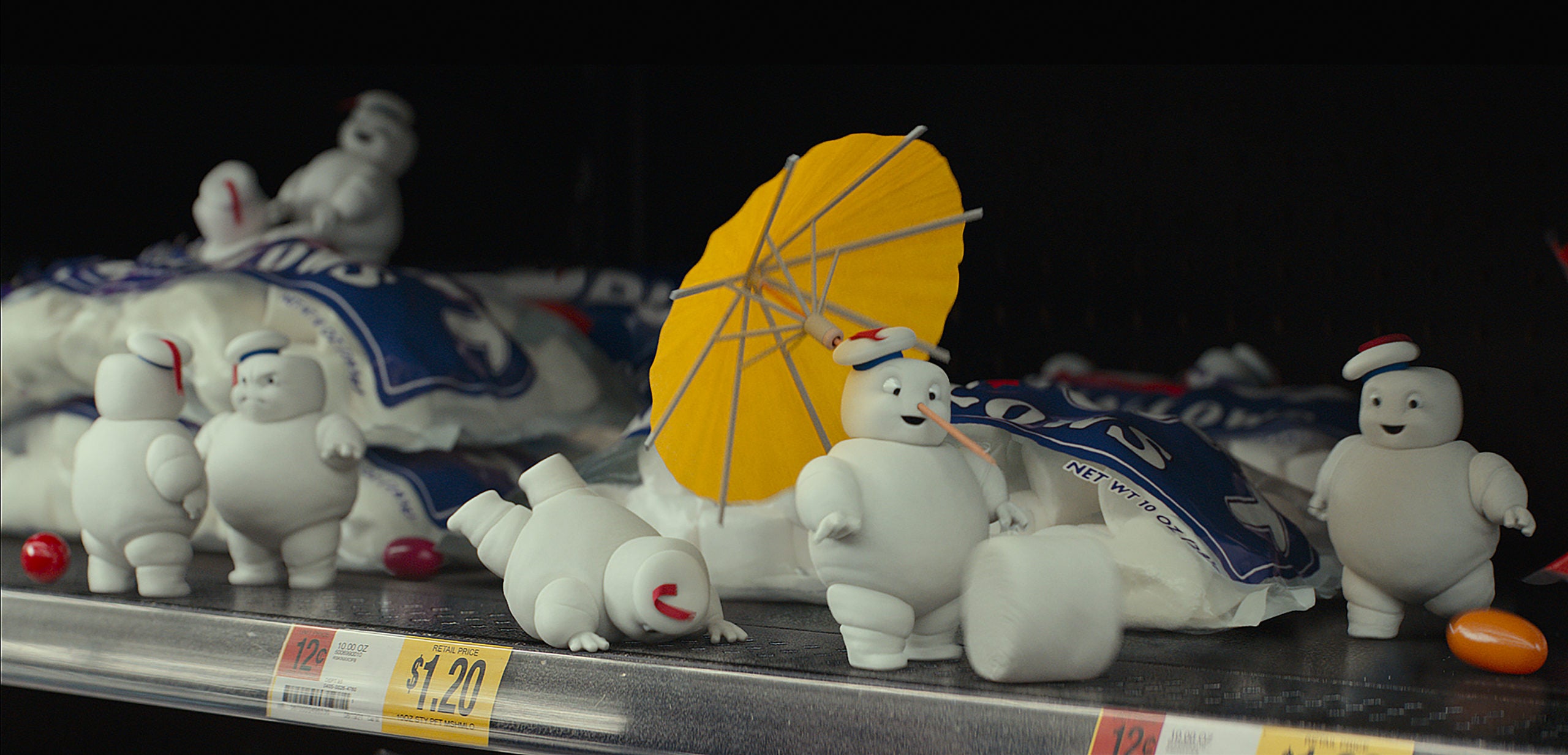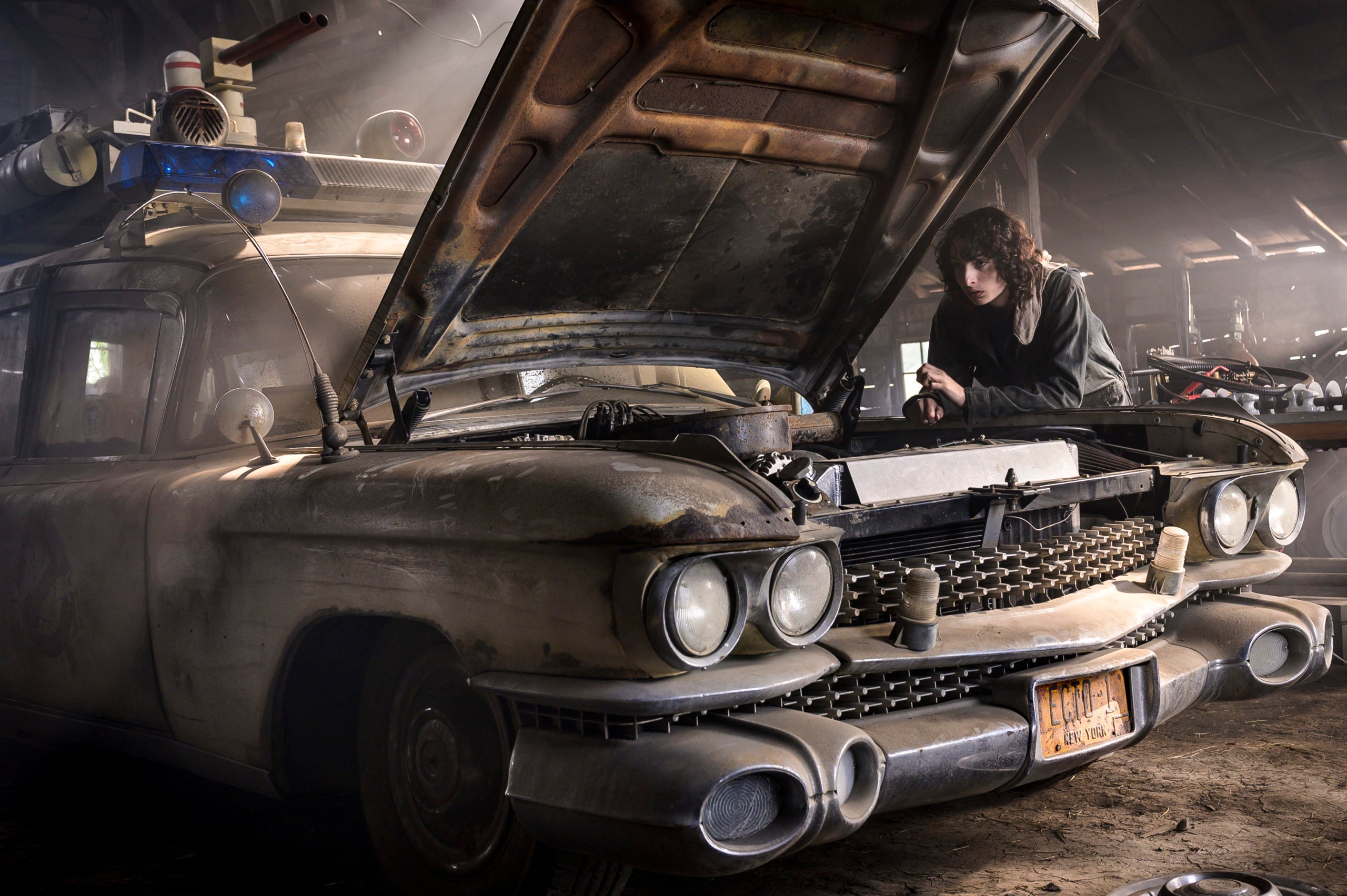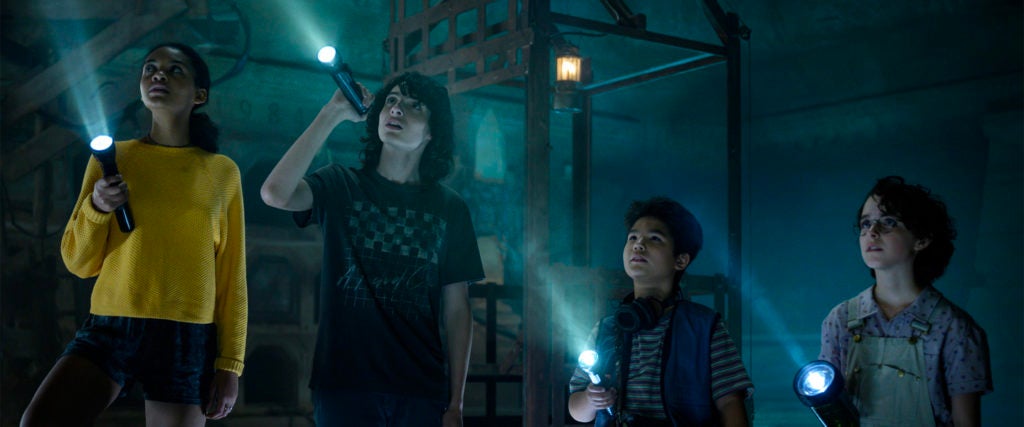Everybody loves Ghostbusters, right? You remember: It starred Bill Murray, Dan Aykroyd, Sigourney Weaver, Harold Ramis, Rick Moranis and Ernie Hudson, and it was about a bunch of wisecracking scientists who help rid New York of some gnarly ghouls (and also that cute little Slimer). Ghostbusters was a massive hit and endlessly quotable — “He slimed me,” “Human sacrifice! Dogs and cats living together! Mass hysteria!,” “Ray, when someone asks you if you’re a god, you say yes” — and it’s gone on to be hugely influential. (Men in Black’s balance of sci-fi scares and irreverent cool owes Ghostbusters big time.) Just a great movie.
Well, I used to think that, anyway. I’m the ideal audience for the original Ghostbusters — it came out during my childhood, becoming a foundational comedy — and I’ve watched it plenty of times over the years, always digging its hangout vibe and memorable characters. But as funny as I think Ghostbusters is, it’s not a movie I consider unimpeachable or one that I’ve based my whole worldview around. Everybody loves Ghostbusters, but it’s not worth getting hysterical over, right?
Apparently I was wrong. If Hollywood’s modern reboot era has taught us anything, it’s that there’s always, always, always a contingent of fans who desperately want another installment of the thing they love — and they want it exactly the way they want it, without a single deviation or challenge to their preconceived beliefs about that thing. The apex of this dumb phenomenon, of course, was The Last Jedi, which drove some of the Star Wars faithful nuts because… god, you know what? I don’t even remember anymore. This stuff is so stupid. But normally when these explosions of super-fan rage happen on the internet, it doesn’t detract from my enjoyment of the core film(s). Even when that rage might be justified — The Rise of Skywalker was so terrible — I can still like Star Wars. Some bad future creative choices don’t ruin the original good thing.
But after watching Ghostbusters: Afterlife, Sony’s second attempt to bring Ghostbusters back into our lives, I wouldn’t say I’m souring on the original Ghostbusters, but I’m definitely reconsidering how much of that film’s success was a product of its time — a time that has probably passed. Whether it’s the 2016 Ghostbusters (which I liked) or Ghostbusters: Afterlife (which I definitely did not like), the problem with rebooting this franchise is inherent in the two very different recent stabs at it. The original Ghostbusters is a very funny movie, but what made it innovative is, now, just the DNA of your typical tentpole. Ghostbusters: Afterlife (which opens November 19th) spends a lot of time inadvertently reminding us that Ghostbusters is a really dated idea for a blockbuster.
The new movie came about because, as you may have heard, lots of dudes hated the idea of the 2016 reboot, which had the audacity to cast ladies as the Ghostbusters. Directed by Paul Feig, who’d worked with Kristen Wiig and Melissa McCarthy on Bridesmaids, that film playfully took aim at the original’s bro-heavy tone, reducing a very game Chris Hemsworth to a hunky idiot and focusing on female friendship, all the while being plenty funny and charming. But many dumb fans found this to be sacrilege — clearly, only men should be Ghostbusters — and so when the 2016 movie failed to be a hit, Sony went back to the drawing board. After all, there was intellectual property to be saved.
Much like The Rise of Skywalker was an anxious attempt by a studio to satisfy the loudest, most don’t-change-anything fans after the more daring The Last Jedi, Ghostbusters: Afterlife very much plays like a conscious attempt to calm down the faithful. And it starts with the fact that Ghostbusters: Afterlife is directed by Jason Reitman, the son of Ivan Reitman, who directed 1984’s Ghostbusters and 1989’s Ghostbusters II. In an introductory video shown before my critics’ screening of Ghostbusters: Afterlife, Jason Reitman lightheartedly informed us that his dad, who produced the new movie, was on set every day, a comment that was essentially signaling to skeptical audience members that, don’t worry, this is definitely a reverent Ghostbusters film. He also encouraged us to enjoy all the easter eggs in Ghostbusters: Afterlife, a request that made someone nearby me audibly sigh in despair.
As my colleague Eric Hynes once put it, “This is the era of do-not-fuck-it-up,” a creatively timid moment in which the most important thing is not disappointing franchise adherents. And that means honoring the source material and throwing in as many references to the original as humanly possible. Clearly, there is no other way to demonstrate your respect, love and admiration for something.

To give Ghostbusters: Afterlife credit, Jason Reitman does mess with the formula a little. The film takes place in Summerville, the sort of forgotten Midwestern town that could have been a stand-in for the disappearing community in The Last Picture Show. Callie (Carrie Coon) has just arrived from Chicago, dragging along her two kids: her massively self-conscious 15-year-old son Trevor (Finn Wolfhard) and his younger sister Phoebe (Mckenna Grace), the sort of self-possessed nerd who doesn’t care if you make fun of her for how bright she is.
They’ve come to Summerville so the broke Callie can inherit her deadbeat father’s estate, which isn’t much to speak of — just a rundown house and barn on what used to be a huge farm long ago. We meet some of the locals — including a very Paul Rudd-ian teacher (Paul Rudd), a quirky classmate (Logan Kim) who becomes Phoebe’s pal and a potential love interest for Trevor (Celeste O’Connor) — before Ghostbusters: Afterlife gets down to business. Turns out, Phoebe’s grandfather — who everybody in town thought was crazy, nicknaming him “dirt farmer” — was Egon, played by Harold Ramis in the old movies. Oh, and some ghosts are threatening to do to Summerville what those specters almost did to the Big Apple back in 1984.
If a lot of that plot description doesn’t sound very Ghostbusters-y — A single mom? Kids? No Slimer?!? — fear not, because Jason Reitman is going to make sure you get your fix. Love the Stay Puft Marshmallow Man? He’s in this! Wasn’t the Ectomobile awesome? Well, dude, it’s back! And although I have to be careful about spoilers — I don’t want Sony assassins coming to my home in the middle of the night — let it be said that if you are even faintly familiar with the 1984 movie, there will be narrative beats in Ghostbusters: Afterlife that ring a bell. Actually, they won’t just ring a bell — they will knock loudly on the door, harder and harder and harder, to make sure you hear them. This movie lives to serve you, the fan.
Of course, this sort of “Hey, remember this thing from your childhood!” reboot/remake/way-too-late sequel is nothing new — all of these movies are catering to our weakness for nostalgia, that comforting passivity that comes with being given the same pleasurable thing again and again. But Ghostbusters: Afterlife hits differently because, beyond its flaws as a standalone film, this sequel only underlines what’s weirdly pointless about trying to resurrect this particular franchise.

What made the original so special was that it cleverly capitalized on certain then-prominent cultural factors, becoming a touchstone because it symbolized aspects of its age. Or, put another way, it was a really good bro-comedy at a time when effects-driven event films were starting to be Hollywood’s bread and butter. Ghostbusters was arguably the highwater mark of the Saturday Night Live/National Lampoon takeover of big-screen comedy. Murray and Akyroyd came from SNL, Ramis co-wrote National Lampoon’s Animal House and directed National Lampoon’s Vacation, and worked with Murray on Meatballs and Stripes. (And Ivan Reitman directed Meatballs and Stripes and produced Animal House.) That brand of anarchic slob/loser comedy peaked with Ghostbusters, which featured three dolts who stumble into a supernatural thriller that also involves blow job jokes.
Cross-pollinating a dude comedy with an FX-driven action movie was rather groundbreaking for 1984, especially when you had ace comics playing the whole ludicrous thing as straight as possible. (Ernie Hudson, who joins the team later in Ghostbusters, didn’t have the established comic chops of his co-stars, but his no-nonsense demeanor fit in perfectly.)
But life moves on, as much as the “Don’t ruin my childhood” crowd doesn’t want to admit it, and Ghostbusters: Afterlife is hamstrung by what’s no longer that fresh about the premise. You can be cynical about Feig’s Ghostbusters, which was part of a short-lived trend of Hollywood gender-flip remakes, but at least it was an honest attempt to rethink the franchise’s core components from a female perspective, essentially acknowledging that a Ghostbusters sequel would need some radical renovations to be interesting. (Plus, it was just funny, and a lot more touching than the original.) Meanwhile, Ghostbusters: Afterlife (aka Ghostbusters Kids) merely copies the recent Star Wars trilogy’s formula by giving us a new, younger set of characters within a pre-existing narrative framework — it’s a little different than the original, but not too different, fans!
Consequently, Ghostbusters: Afterlife just highlights the franchise’s contemporary irrelevance. Slob comedies certainly haven’t gone away — Judd Apatow’s body of work and bromances such as Wedding Crashers are proof of that — but the idea of a bunch of dudes getting into hijinks isn’t exactly exciting, either. (And if you’re going to make such a movie, it had better be sharp and self-aware, like the Jump Street films.) Even the idea of combining comedy and sci-fi is nothing new in the wake of Men in Black, Galaxy Quest, The Mitchells vs. The Machines and others.
Watching the original Ghostbusters now, you feel like you’re witnessing the end of something, but also the beginning of something else. That age of the rowdy, slightly chauvinistic National Lampoon comedy reaches its pinnacle in the film’s first half, but then the second half anticipates the bloated, effects-heavy, showstopping sequences that will soon become de rigueur in every blockbuster’s final act. (Both the 2016 Ghostbusters and the new Ghostbusters: Afterlife have them, and they’re both awful.) As great as the original Ghostbusters is, it comes across now as a little antiquated both creatively and culturally.
Just don’t tell that to the hardcore fans, or the people who made Ghostbusters: Afterlife. By the umpteenth dull callback to the original film, I felt sorry for all involved who had to put their considerable talents into resurrecting a franchise probably not worth saving. Beyond all its other attributes, what made the first Ghostbusters terrific was its defiant air of not giving a shit — they spent a lot of money on a lot of spectacle so that Bill Murray could sit there and brilliantly roll his eyes at the whole silly spectacle, puncturing the self-importance of the blockbuster age in real time. By comparison, what makes Ghostbusters: Afterlife so deflating is that it desperately, desperately does give a shit — it’s what happens when inspired irreverence gives way to the cold calculation of IP and corporate bottom lines.
Some franchises need to know when it’s time to give up the ghost.

